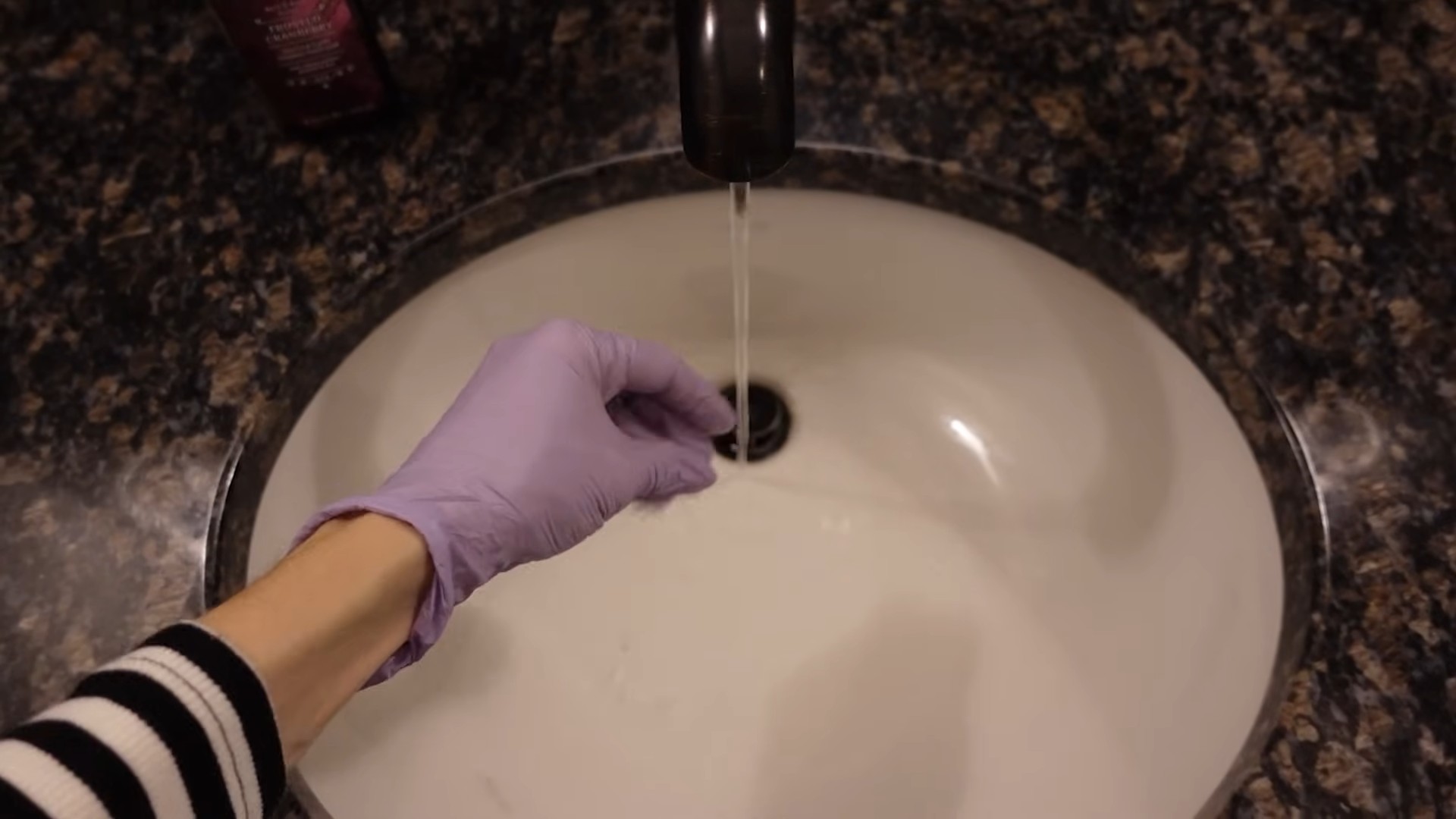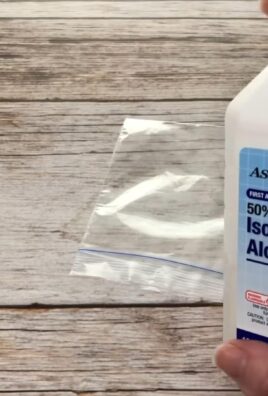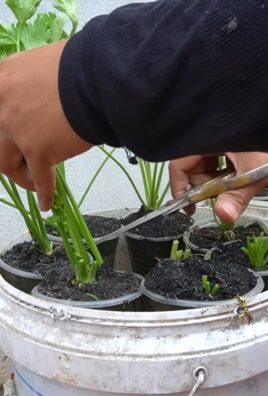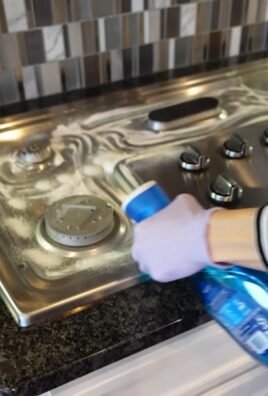Pet hair removal rubber glove: Sounds simple, right? But trust me, this unassuming household item is about to become your new best friend in the battle against furry tumbleweeds! We all love our furry companions, but let’s be honest, the constant shedding can be a real headache. You’re not alone if you feel like you’re constantly vacuuming, lint-rolling, and still finding pet hair clinging to every surface.
The struggle is real, and it’s a struggle that has likely plagued pet owners for centuries! While our ancestors might not have had rubber gloves, they certainly dealt with the challenges of shedding animals. From using natural fibers to brush their pets to employing various cleaning methods, the quest for a hair-free home is a timeless one. But now, we have a super easy and affordable solution!
That’s where this DIY trick comes in. Forget expensive gadgets and harsh chemicals. A simple pet hair removal rubber glove is all you need to effectively lift hair from furniture, carpets, and even clothing. I’m going to show you how this works, and why it’s so much better than other methods. You’ll save time, money, and your sanity! Get ready to say goodbye to pet hair woes and hello to a cleaner, happier home.

DIY Pet Hair Removal Hack: The Rubber Glove Magic
Hey fellow pet lovers! Are you constantly battling pet hair clinging to your furniture, carpets, and clothes? I feel your pain! Shedding is just a part of having furry companions, but it doesn’t mean we have to live in a perpetual fur storm. I’ve tried countless lint rollers, vacuums, and brushes, but nothing seemed to truly conquer the pet hair problem until I discovered this simple, yet incredibly effective hack: using a rubber glove! Yes, you read that right. A humble rubber glove can become your secret weapon against pet hair. Let me show you how!
What You’ll Need:
* A rubber glove (the kind you use for dishwashing or cleaning) – textured ones work best!
* A bowl of water (optional, but recommended for certain surfaces)
* A microfiber cloth (for wiping down surfaces afterward)
How It Works: The Science Behind the Magic
The magic lies in the rubber’s ability to create static electricity. When you rub the glove over a surface, it generates a static charge that attracts pet hair like a magnet. The textured surface of the glove further enhances this effect by grabbing onto the hair and preventing it from simply scattering. The water (if used) helps to loosen the hair and make it even easier for the glove to pick up.
Getting Started: Preparing for the Hair Battle
Before we dive into the cleaning process, let’s get everything ready.
1. Choose Your Glove: Grab your rubber glove. I personally prefer the ones with a textured palm and fingers, as they seem to grip the hair better. You can use any color you like – it won’t affect the cleaning power!
2. Prepare Your Water (Optional): If you’re planning on using water, fill a bowl with lukewarm water. You don’t need a lot, just enough to dampen the glove.
3. Gather Your Cloth: Have your microfiber cloth handy for wiping down the surfaces after you’ve removed the hair. This will help to remove any lingering moisture and leave your furniture looking its best.
Cleaning Different Surfaces: A Step-by-Step Guide
Now, let’s get down to the nitty-gritty. I’ll walk you through how to use the rubber glove on different surfaces, from upholstery to carpets.
Cleaning Upholstery (Sofas, Chairs, etc.)
This is where the rubber glove really shines! Upholstery can be a magnet for pet hair, and traditional cleaning methods often struggle to remove it effectively.
1. Dampen the Glove (Optional): If you’re using water, dip the glove into the bowl and squeeze out any excess. You want the glove to be damp, not soaking wet. If you’re not using water, skip to step 2.
2. Rub the Glove Over the Upholstery: Starting at one end of the sofa or chair, gently rub the glove over the surface in a circular motion. Apply a bit of pressure, but not so much that you damage the fabric. You’ll start to see the pet hair clumping together and sticking to the glove.
3. Rinse the Glove (If Using Water): As the glove becomes covered in hair, rinse it in the bowl of water to remove the accumulated fur. Squeeze out the excess water and continue cleaning. If you’re not using water, simply peel the hair off the glove and discard it.
4. Repeat as Needed: Continue rubbing the glove over the upholstery, rinsing or peeling off the hair as needed, until you’ve covered the entire surface.
5. Wipe Down with a Microfiber Cloth: Once you’ve removed all the visible pet hair, use a clean microfiber cloth to wipe down the upholstery. This will remove any lingering moisture and leave the fabric looking fresh.
Cleaning Carpets and Rugs
Carpets and rugs can be a real challenge when it comes to pet hair removal. The rubber glove can help loosen the hair embedded in the fibers, making it easier to vacuum up.
1. Dampen the Glove (Optional): As with upholstery, you can dampen the glove for carpets and rugs. This can help to loosen the hair and make it easier to pick up.
2. Rub the Glove Over the Carpet/Rug: Kneel down and rub the glove over the carpet or rug in a back-and-forth motion. Apply a bit more pressure than you would on upholstery, as you need to work the glove into the fibers.
3. Gather the Hair: As you rub the glove, you’ll notice the pet hair clumping together. Use your fingers to gather the clumps of hair and remove them from the carpet or rug. You can discard the hair in a trash bag or vacuum it up.
4. Vacuum the Carpet/Rug: After you’ve removed as much hair as possible with the glove, vacuum the carpet or rug thoroughly. This will pick up any remaining loose hair and leave your carpets looking clean and fresh.
Cleaning Clothing and Fabrics
This hack also works wonders on clothing and other fabrics that tend to attract pet hair.
1. Dry Glove is Best: For clothing, I recommend using the glove dry. Water can sometimes leave streaks on certain fabrics.
2. Rub the Glove Over the Fabric: Lay the garment flat on a surface and rub the glove over the fabric in a downward motion. You’ll see the pet hair clinging to the glove.
3. Peel Off the Hair: Peel the hair off the glove and discard it.
4. Repeat as Needed: Continue rubbing the glove over the fabric until you’ve removed all the visible pet hair.
Cleaning Car Interiors
Pet hair in the car? No problem! The rubber glove works just as well on car seats and carpets.
1. Dampen the Glove (Optional): You can dampen the glove for car interiors, but be careful not to get the seats too wet.
2. Rub the Glove Over the Surfaces: Rub the glove over the car seats, carpets, and other surfaces in a circular or back-and-forth motion.
3. Gather and Remove the Hair: Gather the clumps of hair and remove them from the car.
4. Vacuum the Interior: Vacuum the car interior to remove any remaining loose hair.
Tips and Tricks for Maximum Pet Hair Removal
Here are a few extra tips to help you get the most out of this pet hair removal hack:
* Use Textured Gloves: As I mentioned earlier, textured rubber gloves work best because they provide a better grip on the hair.
* Experiment with Water: Try using water on different surfaces to see if it improves the cleaning power. Some fabrics respond better to water than others.
* Clean Regularly: The more often you clean, the less pet hair will accumulate. Try to make it a part of your regular cleaning routine.
* Combine with Other Methods: The rubber glove is a great tool, but it’s not a magic bullet. For heavily soiled areas, you may need to combine it with other cleaning methods, such as vacuuming or using a lint roller.
* Don’t Forget the Corners: Pay special attention to corners and crevices, as these are often where pet hair tends to accumulate.
* Wash Your Gloves: After each use, wash your rubber gloves with soap and water to remove any lingering hair and dirt. This will help to keep them clean and effective.
* Consider a Pet Hair Vacuum: While the rubber glove is great for quick cleanups, a dedicated pet hair vacuum can be a worthwhile investment if you have a lot of shedding pets. These vacuums are designed with powerful suction and specialized attachments to remove pet hair from carpets, upholstery, and other surfaces.
Why This Hack is Awesome
I love this hack because it’s:
* Affordable: Rubber gloves are inexpensive and readily available.
* Effective: It really works! I’ve been amazed at how much pet hair this simple trick can remove.
* Easy to Use: No complicated instructions or special equipment required.
* Versatile: It can be used on a variety of surfaces, from upholstery to carpets to clothing.
* Eco-Friendly: You’re not using harsh chemicals or disposable cleaning products.
Troubleshooting: What to Do If It’s Not Working
If you’re not seeing the results you expect, here are a few things to check:
* Are you using the right type of glove? Make sure you’re using a rubber glove with a textured surface.
* Is the glove clean? A dirty glove won’t be as effective at picking up hair.
* Are you applying enough pressure? You need to apply a bit of pressure to work the glove into the fibers of the fabric or carpet.
* Is the surface too wet? If you’re using water, make sure the surface isn’t too wet. Excess moisture can prevent the glove from working properly.
* Is the hair too embedded? If the hair is deeply embedded in the fibers

Conclusion
Tired of battling pet hair that clings stubbornly to your furniture, carpets, and clothing? The struggle is real, and we’ve all been there, armed with lint rollers that quickly lose their stickiness or vacuums that just don’t quite get the job done. But what if we told you there’s a simple, inexpensive, and incredibly effective solution hiding in your cleaning supplies? The humble rubber glove, specifically a pet hair removal rubber glove, is a game-changer in the world of pet hair management.
This isn’t just another cleaning fad; it’s a practical and efficient way to tackle pet hair that truly works. The textured surface of the rubber glove creates friction, lifting and clumping hair together for easy removal. Forget endlessly scrubbing or vacuuming the same spot repeatedly. With a few simple swipes, you’ll be amazed at how much hair the glove collects.
Why is this DIY trick a must-try? Because it’s:
* Cost-effective: Rubber gloves are inexpensive and readily available.
* Eco-friendly: Reduces reliance on disposable lint rollers.
* Effective: Works on a variety of surfaces, from upholstery to car interiors.
* Easy to use: No complicated instructions or special equipment needed.
* Gentle: Won’t damage delicate fabrics or surfaces.
Beyond the basic technique, there are several variations you can explore to customize your pet hair removal routine. For instance, slightly dampen the glove for even better hair attraction, especially on carpets and rugs. You can also use different types of rubber gloves, such as those with textured palms or fingertips, to see which works best for your specific needs and the type of pet hair you’re dealing with. Experiment with different wiping motions – circular, back-and-forth, or even a gentle patting motion – to find what yields the best results on different surfaces.
Consider using a spray bottle with a mixture of water and a few drops of fabric softener to lightly mist the surface before using the glove. This can help to loosen stubborn hairs and reduce static cling, making them easier to collect. For particularly challenging areas, like crevices in furniture or car seats, try using the tips of your gloved fingers to gently work the hair loose.
Don’t limit yourself to just furniture and carpets. The pet hair removal rubber glove is also fantastic for removing hair from clothing, blankets, and even pet bedding. Before washing your pet’s bedding, give it a thorough once-over with the glove to remove as much hair as possible. This will prevent the hair from clogging your washing machine and ensure that the bedding comes out cleaner.
We’re confident that once you try this simple DIY trick, you’ll wonder how you ever lived without it. It’s a quick, easy, and effective way to keep your home looking its best, even with furry friends around. So, grab a pair of rubber gloves, give it a try, and prepare to be amazed at the results.
We encourage you to try this simple yet effective method and share your experiences with us! Let us know in the comments below how the pet hair removal rubber glove worked for you, any variations you tried, and any tips you discovered along the way. Your feedback will help other pet owners discover the magic of this simple cleaning hack. Share your before-and-after photos on social media using #PetHairNoMore and let’s create a community of clean, hair-free homes!
Frequently Asked Questions (FAQ)
Q: What type of rubber glove works best for pet hair removal?
A: While any rubber glove will work to some extent, gloves with textured palms or fingertips tend to be the most effective. The texture creates more friction, which helps to lift and clump the pet hair together. Experiment with different types to see which works best for your specific type of pet hair and the surfaces you’re cleaning. Thicker gloves may also be more durable for larger cleaning jobs.
Q: Can I use this method on all types of fabrics?
A: The rubber glove method is generally safe for most fabrics, but it’s always a good idea to test it on a small, inconspicuous area first, especially if you’re working with delicate materials like silk or velvet. Avoid using excessive pressure, as this could potentially damage the fabric. For very delicate fabrics, consider using a softer rubber glove or dampening the glove very lightly.
Q: How do I clean the rubber glove after using it to remove pet hair?
A: Cleaning the rubber glove is easy. Simply rinse it under running water to remove the collected hair. You can also use a mild soap to help loosen any stubborn hairs. Allow the glove to air dry completely before storing it. For heavily soiled gloves, you can wash them in the washing machine on a gentle cycle.
Q: Will this method work on embedded pet hair in carpets and rugs?
A: The rubber glove method can be effective for removing embedded pet hair, but it may require more effort and persistence. Try dampening the glove slightly and using a circular motion to loosen the hair. You may also need to vacuum the area afterward to remove any remaining loose hair. For deeply embedded hair, consider using a carpet rake or a specialized pet hair removal tool in conjunction with the rubber glove.
Q: Is this method safe for pets?
A: Yes, the rubber glove method is perfectly safe for pets. It doesn’t involve any harsh chemicals or abrasive materials. In fact, some pets may even enjoy being “groomed” with the rubber glove! Just be gentle and avoid any sensitive areas.
Q: Can I use this method to remove pet hair from my car’s interior?
A: Absolutely! The rubber glove method is excellent for removing pet hair from car seats, carpets, and upholstery. The glove can easily reach into crevices and tight spaces, making it ideal for cleaning car interiors. Be sure to test the glove on a small, inconspicuous area first to ensure it doesn’t damage the material.
Q: How often should I use the rubber glove method to remove pet hair?
A: The frequency depends on how much your pet sheds and how sensitive you are to pet hair. For heavy shedders, you may need to use the glove daily or every other day. For lighter shedders, once or twice a week may be sufficient. Regular use will help to prevent pet hair from building up and becoming more difficult to remove.
Q: Can I use this method on clothing?
A: Yes, the rubber glove method works well on clothing. Simply swipe the glove over the fabric to collect the hair. This is a great way to quickly remove pet hair from your clothes before leaving the house. For delicate fabrics, use a gentle touch and avoid excessive pressure.
Q: What are some other uses for rubber gloves besides pet hair removal?
A: Rubber gloves are incredibly versatile and can be used for a variety of cleaning tasks, such as washing dishes, cleaning bathrooms, and gardening. They can also be used to protect your hands from harsh chemicals and irritants. Consider keeping a separate pair of rubber gloves specifically for pet hair removal to avoid cross-contamination.
Q: I’ve tried the rubber glove method, but it’s not working as well as I expected. What am I doing wrong?
A: There are a few things you can try to improve the effectiveness of the rubber glove method. First, make sure you’re using a glove with a textured surface. Second, try dampening the glove slightly. Third, experiment with different wiping motions and pressures. Finally, be patient and persistent. It may take a few tries to find the technique that works best for you and your pet’s hair. Also, consider the type of fabric you are cleaning. Some fabrics hold onto hair more stubbornly than others.





Leave a Comment